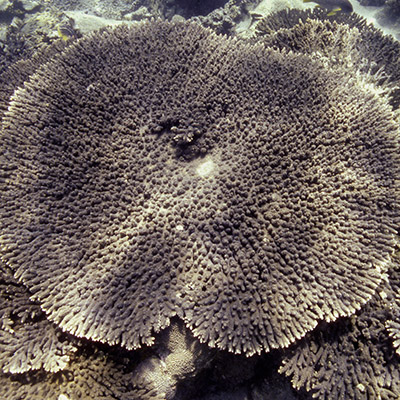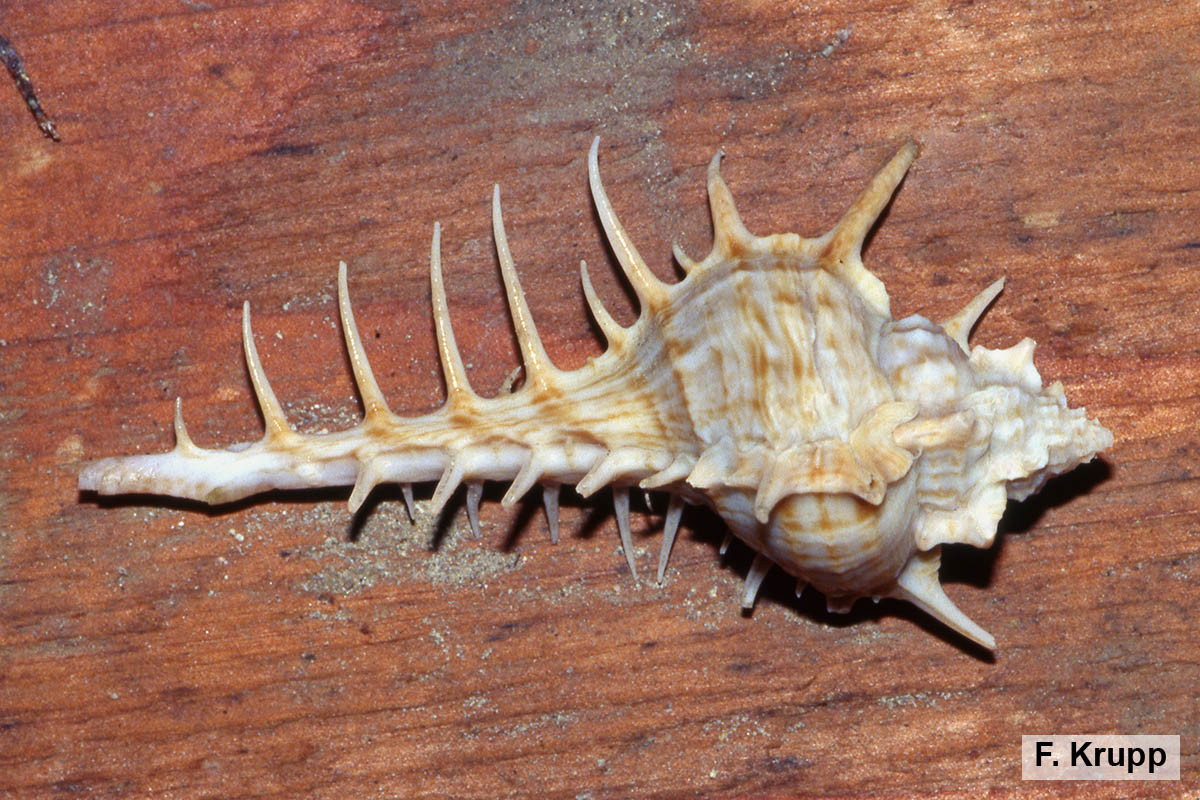Name: Murex scolopax
Common name: Scalloped Murex, (in arabic: False Venus Comb)
Local name:
Scientific name: Murex scolopax
Classification: Class – snails and slugs; order – Neogastropoda; family – murex snails or rock snails (Muricidae)
Synonym: Murex crassispina is a synonym of this species.
Size: The shell length ranges between 8.5 cm and 19 cm.
Habitat:
The snails live on the bottom of shallow waters, around the low-tide level or below, on substrates of sand and sandy mud or among rocks and corals. The spines on their shell will penetrate bare feet when accidentally stepped upon, breaking off in the process. Species of the genus Murex are carnivorous, active predators that feed on other snails, mussels, oysters and barnacles. To get to the soft parts of their prey, the rock snails drill holes through the solid shell of the prey by means of a softening secretion and the scraping action of the radula, their tongue-like toothed feeding organ.
Distribution:
Murex scolopax occurs in the southern part of the Red Sea and the northwestern Indian Ocean, including the Gulf of Aden, Gulf of Oman, Arabian Sea and Arabian Gulf.
Conservation status:
Murex scolopax has not yet been assessed for the IUCN Red List of Threatened Species. Members of the family Muricidae are commonly collected for their attractive shells, which are popular among shell collectors and used for shellcraft.
Description:
The shell is large and club-shaped. The spire is moderately high and acute, consisting of 2.5 subangular nuclear whorls and eight convex postnuclear whorls. The suture is deeply impressed. The aperture is lenticular, with a moderately broad, deep anal sulcus. The outer apertural lip is slightly erect and bears five broad marginal teeth below the shoulder margin. The siphonal canal is straight, narrowly open, and dorsally recurved at its distal end. The shell color is pale grayish brown, with red-brown on the major spiral cords and at the base of the spines. The aperture is white. The interior of the aperture is pale red-brown.








